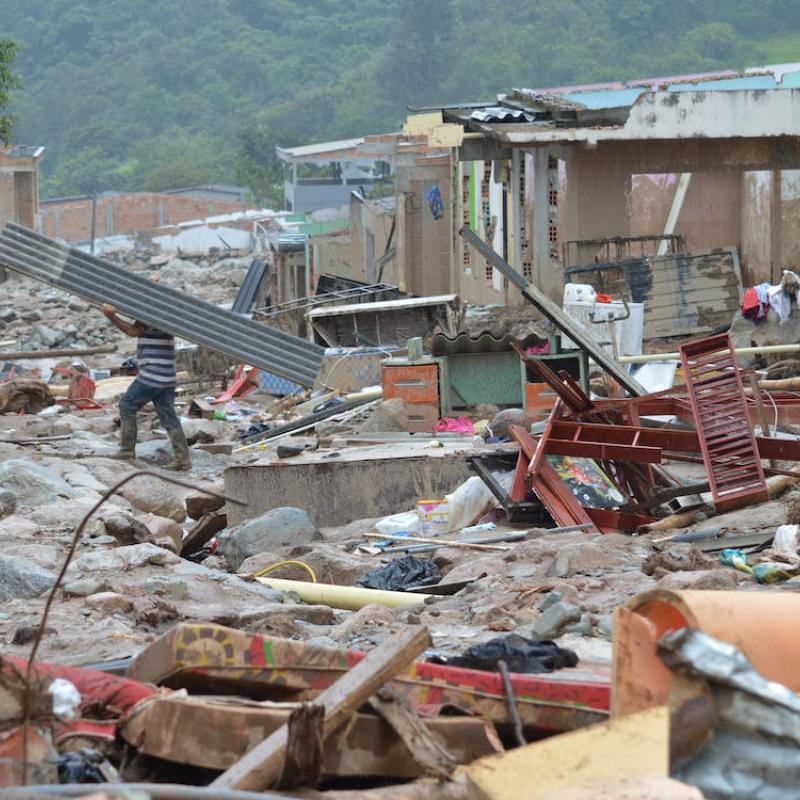Translating warnings into action in Small Island Developing States (SIDS)

Suggested courses:
- Modelling Multi-Hazards & Risk
- Intra Urban Spatial Patterns and Processes
Despite the proven effectiveness of early warning early action in reducing disaster impacts and saving lives, around one-third of the global population is still not covered by early warning systems. In this challenge, you are invited to bridge this gap for Small Island Developing States (SIDS) through fieldwork or desk research in collaboration with the KNMI.
Research indicates that even when information reaches at-risk communities, it is often not properly perceived or acted upon to mitigate risks. The gaps in research and action are largest in developing counties and SIDS. Despite their insignificant contribution to global warming, these states are suffering heavily from its consequences.
Communication barriers, social and cultural stigma, lack of accessibility of infrastructure, and the absence of effective social safety nets continue to prevent communities from accessing timely early warning and risk information. These obstacles disproportionately affect marginalized and minority groups, making it even more difficult for them to access and act on early warning information. These groups are often referred to as "last mile communities", as they are the most remote, most difficult to reach, and/or the last to benefit from programs or services. In addition to warning dissemination, an important aspect of early warning systems is response capability, which means that at-risk communities are prepared and have resources to respond to warnings received.
This research seeks to expand the evidence base for inclusive and accessible early warning early action by fostering a better understanding of the barriers that prevent communities from accessing, comprehending, and acting on early warning information. Recognizing these barriers and identifying factors that impact them is a crucial step to designing more inclusive and people-centered early warning and early action approaches.
Study area: this research can focus on the island states of a) Cabo Verde or b) Sao Tome & Principe. Although not crucial for the fieldwork, we strongly encourage students that speak Portuguese to apply!
Advisor: Carolina Pereira Marghidan, RCCC – specialized in urban heat risk measures
First supervisor: Dr. Eefje Hendriks – specialized in climate and risk adaptive housing, stakeholder mapping and disaster related decision-making
The supervision team can be extended depending of the focus of your master thesis.
- Prof.dr. Justine Blanford – specialized in geo-spatial analysis and health
- Prof.dr. Cees van Westen – specialized in analysis of multi-hazard risks and cascading impacts
- Dr. Nina Schwarz – specialized in Agent Based Modelling
- Dr. Nanette Kingma – specialized in geo-spatial analysis of vulnerabilities and exposure to multiple hazards
- Prof.dr. Marc van den Homberg – Specialized in anticipatory action
This study is connected to the PhD research of Carolina (academic advisor) and will feed in to her work. The topics we have selected to work on are not directly overlapping with her work but strongly related so that it is beneficial for both of you. Therefore, we are interested in any relevant risk related study in one of these islands, so feel free to come with your own idea. Alternatively, you can select one or multiple of the following objectives, focusing on one or multiple hazards (e.g. floods, droughts, extreme heat, cyclones etc.):
- Stakeholder mapping to explore who is active in disaster risk knowledge, risk mitigation and communication.
- Collect household or community data to understand the relationship between early warning messages, risk perceptions and risk preventive behavior on the island of your choice. This includes investigating barriers faced communities in accessing, understanding, and acting upon early warnings.
- Model multi-hazard risks and cascading impacts
- Model vulnerability and exposure for multiple hazards
- Identify and map existing local solutions that enable effective early warning early action among vulnerable groups
- Gather evidence of early actions taken by individuals following the receipt of a hazard alert or evacuation order and outline financial resources needed to support those actions
Develop an agent-based-model (ABM) to explore the relationship between early warning messages, risk perceptions and risk preventive behavior. You could also choose to make a Structural Equation Model or Qualitative Comparative Analysis instead. Such a model can be used by key-stakeholders to understand when their measures are effective. You can build a model on self-collected data or an existing database / literature.
